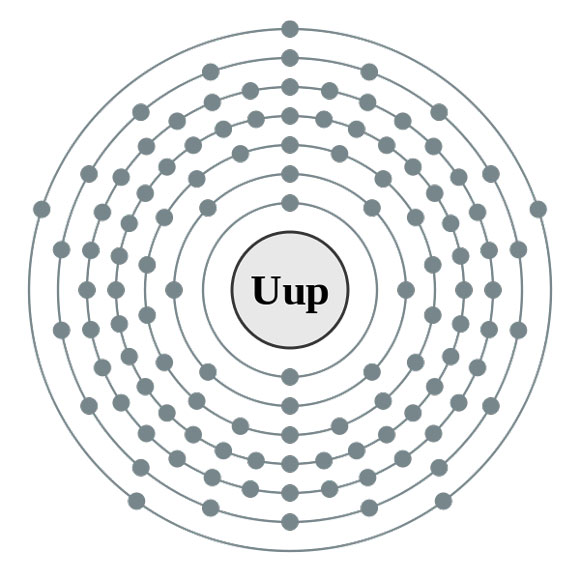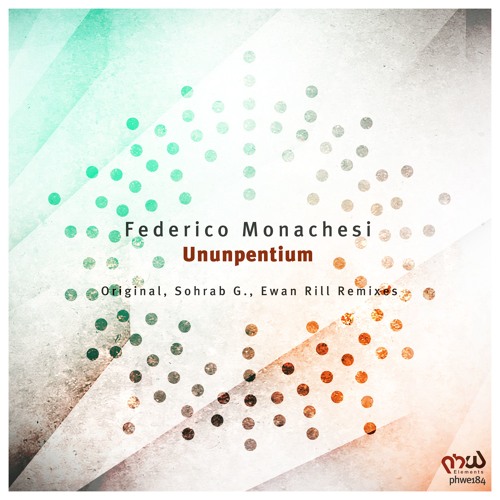- In Conspiracies, Editorial Articles, Government, Headline, Latest Evidence, Mystery of History, Research & Science, UFOs, Weird news
- August 28, 2013
- 2051 Views
Ununpentium, artificially produced radioactive chemical element; symbol Uup; at. 115; mass number of most stable isotope 288; m.p., b.p., sp. Gr., and valence unknown. Situated in Group 15 of the periodic table, it is expected to have properties similar to those of bismuth and antimony. In a 27-day experiment in 2003, scientists from the Joint Institute for Nuclear Research in Dubna. Bob Lazar stated that the “Sport Model” Flying Disc amplified the “Strong Nuclear Force” of Element 115 (UnUnPentium or UUP, currently named Moscovium) to generate the gravity field for “Space-Time Compression.” Bob also stated that the U.S. Government had 500 pounds of Element 115 in their possession. Ununpentium is a temporary IUPAC systematic element name. Element 115 is also sometimes called eka-bismuth. Chemical properties. For now element 115 has only been manufactured in the amount of a few atoms, so the chemistry of element 115 has yet to be researched, but chemistry and physics can tell us a lot about what to expect.
For those versed in the wacko fringe of UFOs (and yes, even within the fringe belief of UFOs there is a contingent so far out there as to be referred to as the wacko fringe of the fringe) the announcement of element 115 will raise few eyebrows.
For those not so versed you might recognize the name Bob Lazar.
Lazar claimed to have worked in 1988 and 1989 as a physicist at S4 allegedly located at Papoose Lake southwest of top secret Area 51 near Groom Dry Lake, Nevada. According to Lazar, S4 serves as a hidden military location for the study and research of extraterrestrial spacecraft, or flying saucers using reverse engineering. Lazar says he saw nine different extraterrestrial vehicles there and has provided detailed information on the mode of propulsion and other technical details of a disc-shaped vehicle he called the sport model.
Lazar’s credibility was challenged after it was discovered that “schools he was supposed to have attended had no record of him, while others in the scientific community had no memory of ever meeting him.” Lazar’s supporters counter that Lazar’s credentials and history were sabotaged to create the very questions of credibility his critics have emphasized.
So what about Element 15, also called Ununpentium?
For the propulsion of the studied vehicles, Bob Lazar claims that the atomic Element 115 served as a nuclear fuel. Element 115 (temporarily named “ununpentium” (symbol Uup)) reportedly provided an energy source which would produce anti-gravity effects under proton bombardment, along with antimatter for energy production. As the intense strong nuclear force field of Element 115’s nucleus would be properly amplified, the resulting large-scale gravitational effect would be a distortion or warp of space-time that would, in effect, greatly shorten the distance and travel time to a destination.
According to an article on PopSci.com
Theoretical Element 115 Exists, Study Confirms
Researchers confirm the existence of this synthetic element in a new accelerator study. Will it be enough to give ununpentium official recognition and a new name?
By Francie Diep Posted 08.27.2013
At the bottom right corner of the periodic table of elements, there are a handful of boxes that illustrators often color gray. The International Union of Pure and Applied Chemistry leaves out those boxes altogether, so that their periodic table looks a bit gap-toothed. The boxes are for elements that the IUPAC hasn’t yet confirmed actually exist.

Now, a new set of experiments backs up the discovery of one of those elements. An international team of physicists has synthesized an element with 115 protons in the GSI accelerator in Germany. This isn’t the first time a research group has synthesized the element, which has the temporary name of ununpentium (Latin for one-one-five, plus “-ium.”) A team of Russian and U.S. scientists first made ununpentium in the early 2000s and published a paper about it in 2006. However, at the time, the IUPAC didn’t consider that enough evidence to officially recognize—or name—ununpentium. The new GSI studies are another step toward official recognition.

Ununpentium Fuel
Why do we say that people “synthesized” or “made” ununpentium, instead of saying people “found” it? Well, like other super-heavy elements, ununpentium can only exist when people perform experiments to create it. It’s an entirely synthetic element (ununpentium : elements :: polyester : fabrics?). You can’t just cook it up in any lab, either. The creation of elements heavier than uranium, which is the heaviest element to occur naturally on Earth and contains 92 protons, requires fusion reactions, nuclear reactions, or other highly specialized chemistry. Before ununpentium, the GSI accelerator had created six synthetic elements with more protons than uranium.
Amnafzar driver download for windows. To make ununpentium, the team of physicists working at GSI bombarded a thin film of americium—another synthetic element, with 95 protons—with calcium ions, which have 20 protons each. The bombardment fuses the nuclei of the americium atoms with the nuclei of the calcium atoms to make a new, single, 115-proton nucleus. (See the very educational GIF on GSI’s “new elements” webpage.) Like all super-heavy, synthetic elements, ununpentium decays quickly. Atoms of ununpentium that researchers made for the 2006 announcement lasted just 30 to 80 milliseconds.
According to Lund University in Sweden, IUPAC members will now review the new confirmation of the 2006 work and decide whether it’s enough to merit official recognition for ununpentium. Lund researchers led the recent ununpentium experiments done at GSI. Meanwhile, the Lund team has published its findings in the journal Physical Review Letters.
Ununpentium
Besides confirming cool theories in chemistry, work on synthetic elements helps researchers learn more about the process of fission in general, according to the U.S.’ Lawrence Livermore National Laboratory. You’re unlikely to see ununpentium in even the most advanced gizmos of the future, however. So far, scientists have found practical applications only for synthetic elements with 100 or so protons or fewer.

Of course nothing about this discovery in any way lends support to Bob Lazar’s delusions fanciful stories, and while it has always been theoretically possible to create many of these elements which do not occur in nature, doing so in the lab at this point only teaches us something about fusion. Nothing about UFOs.
Henry@GhostTheory.com
Follow us on FaceBook for updates and more discussions
15 commentsIt is considered to be metal and is likely to be solid when it is kept under room temperature. Its atomic number 115, Uup Symbol, and since it has no official name, it is known as it, which is on one five in Latin. The discovery of this element was made in 2003, however official announcement was made on 2nd February 2004. Scientists from Joint Institute for Nuclear Research Dubna, Russia, and scientists at the Lawrence Livermore National Laboratory in the USA discovered the element Isotope 291.
Sixteen years ago a controversial character who claimed to have analyzed ships of extraterrestrial origin referred to a strange material that served as fuel and allowed them to control gravity. Recently, a team of Swiss researchers has created atoms of element 115, whose properties reminiscent of those reported by the mysterious investigator.
Albatron driver download for windows. At the end of January, the Paul Scherrer Institute of Switzerland announced that one of its research teams had succeeded in making some atoms of a new superheavy element, which corresponds to the number 115 in the periodic table and which has been provisionally baptized as ununpentium. It is an undoubted scientific success that for many may have a second reading even more exciting than that derived from the importance of the discovery itself. And it is that element 115, which is not found on our planet naturally, has been identified as the fuel of the alleged extraterrestrial ships that have crashed through the last decades in the United States.
Ununpentium is a Periodic Table Element, it’s Atomic # is 115, Isotope # 291, Symbol Uup
Scientists from Russia and the USA created this Element by bombarding atoms americium with the calcium ions in a cyclotron. By doing this, four atoms of it can be created. Only a few atoms of this element have been created so far. To date, about 50 atoms have been found during the experimentations and it has been found that most of these atoms are having the mass numbers ranging between 287 and 290. Ununpentium is known to be the second lightest element, whose nomenclature has not been done so far. Following the Mendeleev’s naming conventions for unnamed elements, this ununpentium is also sometimes called as eka-bismuth. In the period table, it is found to have taken its place as a p-block transactinide element. It belongs to the 7th period and is positioned at the 15th group as the heaviest pnictogen. However, there is no confirmation on the behavior as the heavier homolog to the pnictogen bismuth. During the experiments, it has been observed and calculations revealed some properties, which are identical to its lighter homologs like nitrogen, phosphorus, arsenic, antimony, and bismuth with some difference are expected to be there.
It has four isotopes, with half-life. Out of these half-lived isotopes Cardiolex driver download.
The steadiest isotope is 289Uup, whose half-life is about 220 milliseconds.
In November 1989, Bob Lazar appeared in an interview on the Las Vegas TV TV channel, very few took their explosive statements seriously. He claimed that he had been working at a supersecret base of the US government called S-4, located near the famous Area 51. There, he maintained, he had analyzed some extraterrestrial ships that had been captured by the military.
According to Lazar, his task consisted in investigating as physical the system of propulsion of those devices and trying to reproduce, as much as possible, their advanced technology.
But, always according to Lazar’s version; It had not been possible to comprehend in its totality, and less to apply, that alien technology. If, on the contrary, it was possible to determine that the secret of the operation of the ships resided in an element that is not on our planet. Much heavier than lead and orange-looking, element 115, said Lazar; Had extraordinary properties that made it an amazing source of energy and the key to generate artificial gravity.
